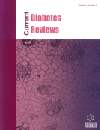-
s Type 2 Diabetes and its Impact on the Immune System
- Source: Current Diabetes Reviews, Volume 16, Issue 5, Jun 2020, p. 442 - 449
-
- 01 Jun 2020
Abstract
Introduction: Type 2 Diabetes (T2D) is a major health problem worldwide. This metabolic disease is indicated by high blood glucose levels due to insufficient insulin production by the pancreas. An inflammatory response occurs as a result of the immune response to high blood glucose levels as well as the presence of inflammatory mediators produced by adipocytes and macrophages in fat tissue. This low and chronic inflammation damages the pancreatic beta cells and leads to insufficient insulin production, which results in hyperglycemia. Hyperglycemia in diabetes is thought to cause dysfunction of the immune response, which fails to control the spread of invading pathogens in diabetic subjects. Therefore, diabetic subjects are known to more susceptible to infections. The increased prevalence of T2D will increase the incidence of infectious diseases and related comorbidities. Objective: This review provides an overview of the immunological aspect of T2D and the possible mechanisms that result in increased infections in diabetics. Conclusion: A better understanding of how immune dysfunctions occur during hyperglycemia can lead to novel treatments and preventions for infectious diseases and T2D comorbidities, thus improving the outcome of infectious disease treatment in T2D patients.


